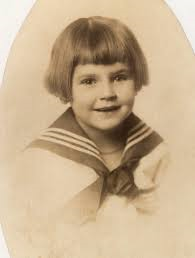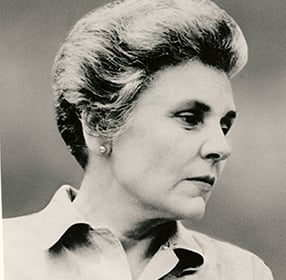Elizabeth Bishop as a child and an adult
Soul murder is a term probably first coined in the nineteenth century, and used by the playwrights Henrik Ibsen and August Strindberg. Ibsen defined it as the destruction of the love of life in another person. His character speaks:
‘You have committed the one mortal sin! … You have killed the love of life in me. Do you understand what that means? The Bible speaks of a mysterious sin for which there is no forgiveness. I have never understood what it could be; but now I understand. The great unpardonable sin is to murder the love of life in a human soul … You have killed all the joy of life in me.’
The analyst Leonard Shengold who wrote two books on soul murder, uses the term to describe the wilful abuse and neglect of children by adults that are of sufficient intensity and frequency to be traumatic; and so, the child’s emotional development is profoundly and negatively affected. In one of his books, he looks particularly at writers and poets who suffered serious trauma in their childhood, but, who, despite suffering the after effects in adulthood, were able to find a creative spirit and sufficient curiosity to transform some of their experiences into beautiful poetry and prose, and so nurture their souls.
One of these is the American poet, Elizabeth Bishop who was born in 1911. Her father died when she was eight months old, and almost immediately her mother had a mental breakdown and was in and out of mental institutions for the next five years. With her daughter the mother’s behaviour was unpredictable, and at times rejecting. She was permanently committed when Bishop was 5 years old, and child was sent to live with paternal grandparents whom she didn’t like, finally living between relatives, before, as an adolescent, going off to boarding school and college.
As an adult Bishop struggled with asthma, various neurotic behaviours, complex relationships, and alcoholism, but her gifts were such that she was able to liberate herself in poetic creativity. Shengold calls it the miracle of creativity and writes that:
‘The death of her father and the madness of her mother in infancy were losses that destroyed much of Elizabeth Bishop’s sense of individuation and security. And, partly in identification and partly in relation to people she attempted to love, sexually and nonsexually, she remained fundamentally tied to her mother until her own death. And yet – what an achievement – in art and in life – to have fought with so much success against that strangling, sticky, emotional matrix of longing and hatred, to have been capable of such warm friendships and devotion, and to have created such prose and poetry.
The sense of identity Bishop finally forged, no matter how marred by self-deprecation and masochism, was magnificent.’
Her last poem ‘Sonnet’ (ostensibly about a broken thermometer) written before she died in 1979, captures some of the struggles after soul murder, and some of the glory of her creative life, and lesbian loves:
Caught – the bubble
in the spirit level,
a creature divided;
and the compass needle
wobbling and wavering,
undecided.
Freed – the broken
thermometer’s mercury
running away;
and the rainbow-bird
from the narrow bevel
of the empty mirror,
flying wherever
it feels like, gay!
Death can be a kind of liberation after being broken.

